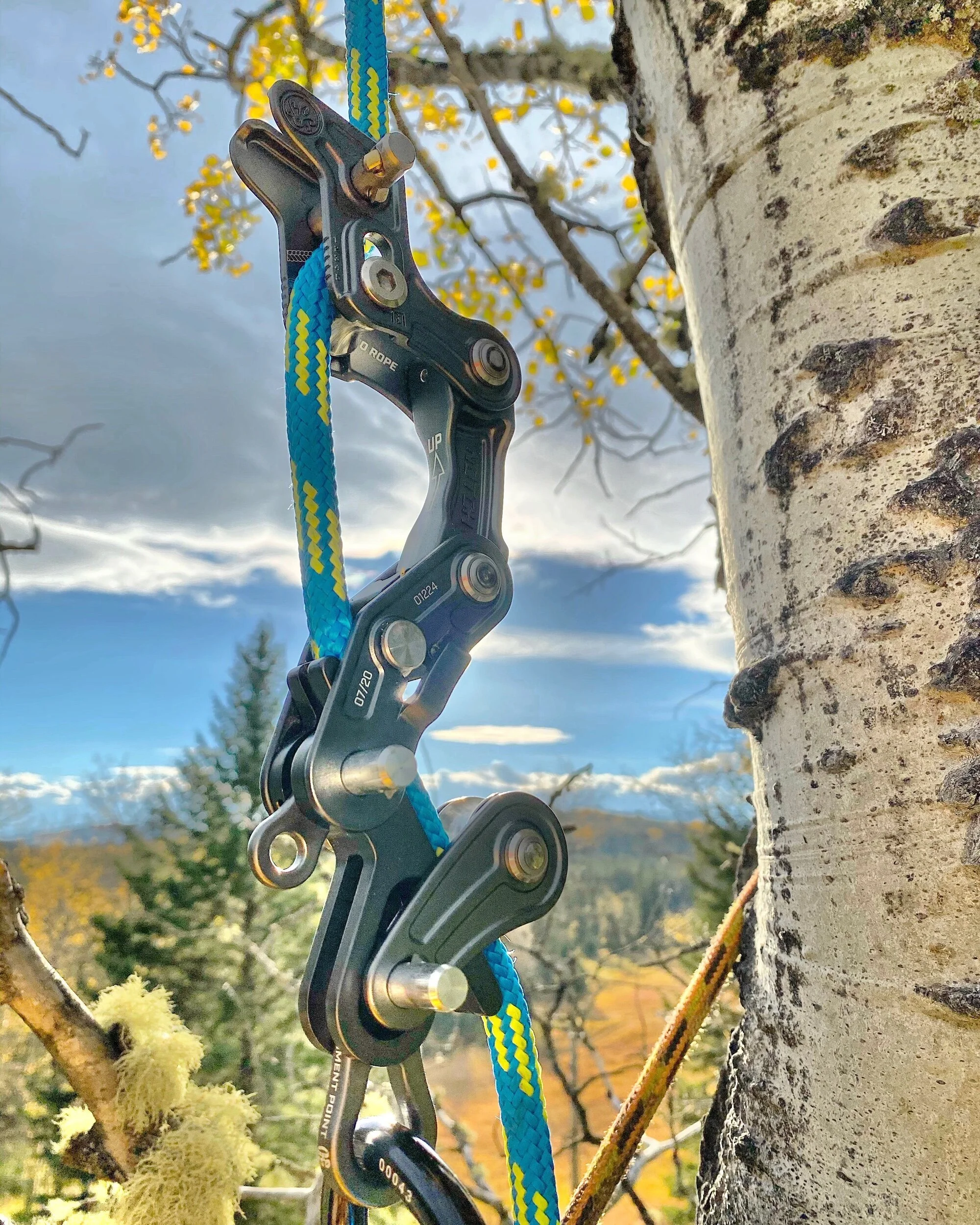Tool Tuesday - Notch Rope Runner Pro
It’s Tuesday, and time for another look at the Tools Red Mountain Rigging uses to get the job done!
Today we take a look at the Rope Runner Pro by Notch Equipment, a mechanical ascender designed to facilitate access and positioning in a tree.
Just what is a mechanical ascender, anyways? Sometimes called a mechanical prussik due to their replacement of the traditional cord prussik in capturing progress along a rope, there are a myriad of various designs from a number of manufacturers that all essentially do one thing - allow free movement of the rope through the device in one direction while grabbing on to the rope in the opposite. This allows free movement UP the rope, while catching any potential falls back DOWN to Earth while working a loft.
The Rope Runner Pro is just one of these many devices that we personally absolutely love. When we look at climbing a tree on a rope, there are two main techniques that can be utilized - a Moving Rope System (MRS) or Double Rope Technique (DRT), and a Stationary Rope System (SRS) or Single Rope Technique (SRT). Regardless of what you call it, the Rope Runner Pro is equally at home with both. Our crews feel incredibly confident when tied in with the device, which leads to a safer and more efficient crew. Offering efficient movement on the ascent, it grabs instantly and securely and allows for an incredibly smooth descent. Coupled with a foot and a knee ascender (we’ll take a closer look at these on another Tuesday), the Rope Runner Pro is definitely our go-to progress capture and positioning device when climbing a rope!
Why would we want to climb on a rope instead of the tree itself? A while back we introduced climbing spurs, a tool that helps us gain traction on a tree using spikes that puncture into the wood. These spikes tend to puncture the cambium layer of the tree, allowing for the introduction of insects and disease into the tree. If we’re pruning a tree (like in the video featured here) we certainly don’t want to damage it using spurs! Setting a rope (SRS in this video) allows us to avoid any damage to the tree while completing our work.
There’s also times where it may be unsafe to climb a tree for removal, due to severe rot or structural compromise. Is these situations, we may set a line in to an adjacent tree to climb high enough to set any rigging that may be required to bring the hazardous tree down safely and in control.
Written by Sean Sterna - The Rocky Mountain Arborist & Used with Permission


